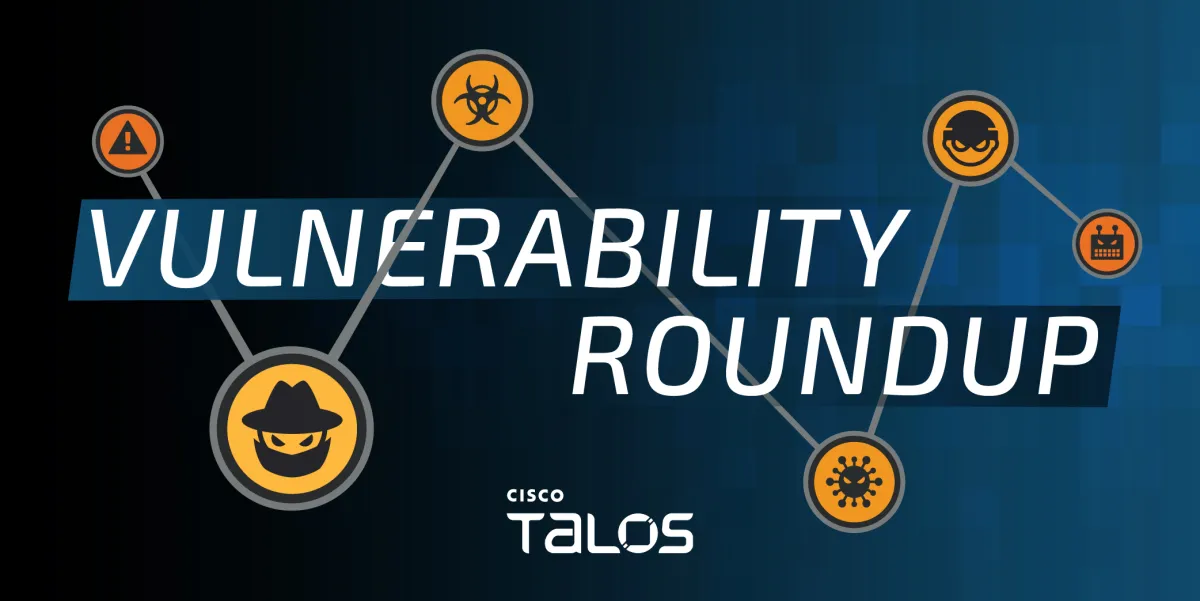CyberAlerts is shutting down on June 30th, 2025. Thank you for your support!
Example Searches:
CVE
Threat Actors
Countries
Vendors
Severity
Known Exploited

|
Description: Cisco has released security updates for a high-severity Webex vulnerability that allows unauthenticated attackers to gain client-side remote code execution using malicious meeting invite links. [...]
April 18th, 2025 (2 months ago)
|

|
Description: Cybersecurity researchers are warning of continued risks posed by a distributed denial-of-service (DDoS) malware known as XorDDoS, with 71.3 percent of the attacks between November 2023 and February 2025 targeting the United States.
"From 2020 to 2023, the XorDDoS trojan has increased significantly in prevalence," Cisco Talos researcher Joey Chen said in a Thursday analysis.
April 18th, 2025 (2 months ago)
|

|
Description: A newly upgraded version of a long-running malware strain called XorDDoS is being used to launch powerful distributed denial-of-service (DDoS) attacks, with the United States emerging as the primary target. According to new research from Cisco Talos, over 70% of attempted attacks using the XorDDoS malware between late 2023 and early 2025 were aimed at …
The post New “VIP” XorDDoS Malware Targets U.S. in Global Botnet Expansion appeared first on CyberInsider.
April 17th, 2025 (2 months ago)
|

|
Description: Cisco Talos observed the ongoing global spread of the XorDDoS malware, predominantly targeting the United States, with evidence suggesting Chinese-speaking operators are using sophisticated tools to orchestrate widespread attacks.
April 17th, 2025 (2 months ago)
|
|
CVE-2025-20178 |
Description:
A vulnerability in the web-based management interface of Cisco Secure Network Analytics could allow an authenticated, remote attacker with valid administrative credentials to execute arbitrary commands as root on the underlying operating system.
This vulnerability is due to insufficient integrity checks within device backup files. An attacker with valid administrative credentials could exploit this vulnerability by crafting a malicious backup file and restoring it to an affected device. A successful exploit could allow the attacker to obtain shell access on the underlying operating system with the privileges of root.
Cisco has released software updates that address this vulnerability. There are no workarounds that address this vulnerability.
This advisory is available at the following link:https://sec.cloudapps.cisco.com/security/center/content/CiscoSecurityAdvisory/cisco-sa-sna-prvesc-4BQmK33Z
Security Impact Rating: Medium
CVE: CVE-2025-20178
EPSS Score: 0.01%
April 16th, 2025 (2 months ago)
|
|
CVE-2025-20236 |
Description:
A vulnerability in the custom URL parser of Cisco Webex App could allow an unauthenticated, remote attacker to persuade a user to download arbitrary files, which could allow the attacker to execute arbitrary commands on the host of the targeted user.
This vulnerability is due to insufficient input validation when Cisco Webex App processes a meeting invite link. An attacker could exploit this vulnerability by persuading a user to click a crafted meeting invite link and download arbitrary files. A successful exploit could allow the attacker to execute arbitrary commands with the privileges of the targeted user.
Cisco has released software updates that address this vulnerability. There are no workarounds that address this vulnerability.
This advisory is available at the following link:https://sec.cloudapps.cisco.com/security/center/content/CiscoSecurityAdvisory/cisco-sa-webex-app-client-rce-ufyMMYLC
Security Impact Rating: High
CVE: CVE-2025-20236
EPSS Score: 0.13%
April 16th, 2025 (2 months ago)
|
|
CVE-2025-20150 |
Description:
A vulnerability in Cisco Nexus Dashboard could allow an unauthenticated, remote attacker to enumerate LDAP user accounts.
This vulnerability is due to the improper handling of LDAP authentication requests. An attacker could exploit this vulnerability by sending authentication requests to an affected system. A successful exploit could allow an attacker to determine which usernames are valid LDAP user accounts.
Cisco has released software updates that address this vulnerability. There are no workarounds that address this vulnerability.
This advisory is available at the following link:https://sec.cloudapps.cisco.com/security/center/content/CiscoSecurityAdvisory/cisco-sa-nd-unenum-2xFFh472
Security Impact Rating: Medium
CVE: CVE-2025-20150
EPSS Score: 0.04%
April 16th, 2025 (2 months ago)
|

|
Description: Cisco Talos’ Vulnerability Discovery & Research team recently disclosed three vulnerabilities found in Eclipse ThreadX and four vulnerabilities in STMicroelectronics. The vulnerabilities mentioned in this blog post have been patched by their respective vendors, all in adherence to Cisco’s third-party vulnerability disclosure policy.
April 16th, 2025 (2 months ago)
|
|
CVE-2011-4023 |
Description:
Tenable OT Security Plugin ID 503154 with High Severity
Synopsis
The remote OT asset is affected by a vulnerability.
Description
Memory leak in libcmd in Cisco NX-OS 5.0 on Nexus switches allows remote authenticated users to cause a denial of service (memory consumption) via SNMP requests, aka Bug ID CSCtr65682.This plugin only works with Tenable.ot.Please visit https://www.tenable.com/products/tenable-ot for more information.
Solution
Refer to the vendor advisory.
Read more at https://www.tenable.com/plugins/ot/503154
April 11th, 2025 (3 months ago)
|
|
CVE-2003-1109 |
Description:
Tenable OT Security Plugin ID 503155 with High Severity
Synopsis
The remote OT asset is affected by a vulnerability.
Description
The Session Initiation Protocol (SIP) implementation in multiple Cisco products including IP Phone models 7940 and 7960, IOS versions in the 12.2 train, and Secure PIX 5.2.9 to 6.2.2 allows remote attackers to cause a denial of service and possibly execute arbitrary code via crafted INVITE messages, as demonstrated by the OUSPG PROTOS c07-sip test suite.This plugin only works with Tenable.ot.Please visit https://www.tenable.com/products/tenable-ot for more information.
Solution
Refer to the vendor advisory.
Read more at https://www.tenable.com/plugins/ot/503155
April 11th, 2025 (3 months ago)
|
